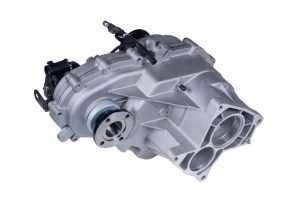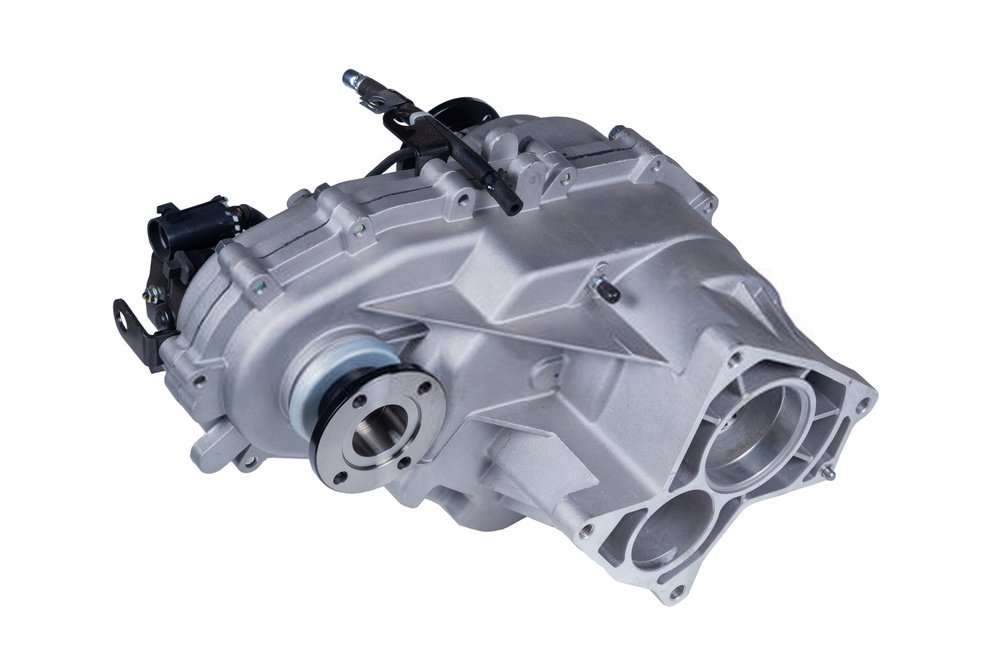A transfer case is a critical component of a truck’s drivetrain system. It is responsible for distributing power from the transmission to both the front and rear axles, allowing the vehicle to operate in 4-wheel drive mode. The transfer case works by taking power from the transmission and splitting it between two separate driveshafts that connect to the front and rear axles. This allows for better traction control on different terrains, improved handling in extreme conditions, and enhanced towing capacity.
The importance of what is a transfer case on a truck cannot be overstated. It plays a crucial role in improving off-road capabilities, such as providing better traction control on uneven terrain or when driving through mud or snow. In addition, it enhances the truck’s towing capacity by providing more power to all four wheels, resulting in better performance when towing heavy loads. Moreover, with improved stability and control, there is an increase in safety while driving under challenging conditions.
Transfer cases have been around since the early days of automobiles but were only used in specialized vehicles like military trucks or those designed for off-road use until much later. In the 1930s, however, they started to become more common in passenger cars as well as light-duty trucks. The earliest transfer cases were manually operated using levers or knobs located inside the cabin. But with advancements in technology came electronic shifters that allowed drivers to switch between two-wheel drive and four-wheel drive modes with just a push of a button. Today’s modern transfer cases are highly advanced systems that offer even greater functionality and performance than ever before.
Jump to
What is a Transfer Case?

A transfer case is a critical component of a truck’s drivetrain system. It is responsible for distributing power from the transmission to both the front and rear axles, allowing the vehicle to operate in 4-wheel drive mode. The transfer case works by taking power from the transmission and splitting it between two separate driveshafts that connect to the front and rear axles. This allows for better traction control on different terrains, improved handling in extreme conditions, and enhanced towing capacity.
The transfer case is a housing that contains gears, bearings, chains, and other components. Its primary function is to take power from the transmission and distribute it evenly to the front and rear axles so that the vehicle can operate in 4-wheel drive mode. The transfer case also plays a role in power distribution between the front and rear wheels when driving in 2-wheel drive mode. In addition, it houses the differential which helps balance torque between the left and right wheels.
There are three main types of transfer cases – gear-driven, chain-driven, and electronic. Gear-driven transfer cases are the most common type found in trucks and SUVs. They use gears to transfer power from the transmission to the driveshafts. Chain-driven transfer cases are less common but are often used in heavy-duty trucks due to their durability. Electronic transfer cases are the newest type of transfer case and use electronic sensors and actuators to control the distribution of power.
How Does a Transfer Case in a Truck Work?
The transfer case is a vital component of a truck’s drivetrain system, responsible for distributing power from the transmission to both the front and rear axles. The transfer case works by taking power from the transmission and splitting it between two separate driveshafts that connect to the front and rear axles. The process begins when the driver engages 4-wheel drive mode, which activates the transfer case.
The transfer case is located directly behind the transmission and receives power through an input shaft. The input shaft connects to the output shaft of the transmission, allowing power to flow into the transfer case. Once inside, power is distributed evenly between two separate driveshafts that connect to both the front and rear axles.
Once power enters the transfer case, it is split equally between two separate driveshafts that connect to both the front and rear axles. This allows for better traction control on different terrains, improved handling in extreme conditions, and enhanced towing capacity. In addition, with improved stability and control under challenging conditions comes increased safety while driving.
The differential within a transfer case helps balance torque between left and right wheels on each axle while driving in 2-wheel drive mode. When engaged in 4-wheel drive mode or low-range gear reduction mode, locking mechanisms can be utilized within some transfer cases which provide additional traction control by locking both front or both rear wheels together so they move at an equal speed.
Importance of a Transfer Case for Trucks
The transfer case is a critical component of a truck’s drivetrain system and plays an essential role in enhancing the vehicle’s capabilities. One of the most significant benefits of the transfer case is its ability to improve a truck’s off-road capabilities.
Off-road Capabilities
Off-roading can be challenging, and it requires a vehicle that can handle different terrains with ease. The transfer case allows trucks to operate in 4-wheel drive mode, which significantly improves traction control on different terrains such as mud, sand, or snow. With power distributed evenly to all four wheels, trucks equipped with a transfer case can tackle even the toughest terrain without getting stuck.
Traction Control on Different Terrains
The transfer case enables trucks to distribute power evenly between the front and rear axles when driving in 4-wheel drive mode. This results in improved traction control on different terrains like steep inclines, rocky terrain, or loose gravel. By applying torque to all four wheels simultaneously, drivers have better control over their vehicle while navigating challenging driving conditions.
Improved Handling in Extreme Conditions
In addition to providing improved traction control, the transfer case also enhances handling for trucks operating in extreme conditions. Whether it’s navigating through deep snow or crossing streams, having power distributed evenly between all four wheels provides greater stability and control for drivers. As a result, they can maneuver their vehicles more effectively and confidently through difficult terrain.
Towing Capacity Enhancement
Trucks are known for their ability to haul heavy loads, making them an essential tool for many industries. The transfer case is a critical component that plays a significant role in enhancing a truck’s towing capacity.
The transfer case enables power to be distributed evenly to both the front and rear axles when engaged in 4-wheel drive mode or low-range gear reduction mode. This results in better towing performance by increasing power to all wheels, providing greater traction control on slippery surfaces, and ensuring that the vehicle can handle heavier loads with ease.
One of the most significant benefits of the transfer case is its ability to enhance safety while towing heavy loads. The distribution of power between all four wheels provides greater stability and control for drivers, reducing the risk of accidents and improving overall safety. By engaging the transfer case, drivers can ensure that their vehicle maintains proper balance and stability while towing, even when facing challenging driving conditions like steep inclines or uneven terrain.
The transfer case is an essential component for any truck owner who wants to maximize their vehicle’s towing capacity safely. With increased power distribution to all wheels and improved stability and control, trucks equipped with a transfer case can handle even the heaviest loads with ease while ensuring driver safety at all times.
Considerations When Buying or Maintaining a Transfer Case
The transfer case is an essential component of a truck’s drivetrain system, and it’s crucial to consider various factors when buying or maintaining it.
When buying a transfer case, it’s essential to ensure that it’s compatible with your truck’s make and model. This is because different trucks have unique drivetrain systems that require specific types of transfer cases. Installing an incompatible transfer case can cause significant damage to your vehicle, resulting in costly repairs.
Another critical consideration is the costs involved in installing, maintaining, and repairing the transfer case. It’s important to research the cost of parts and labor associated with these activities before making any purchase decisions. Additionally, you should look for reputable mechanics who specialize in working on transfer cases to ensure that you get high-quality service at a fair price.
Proper maintenance is crucial for ensuring that your truck’s transfer case operates efficiently over its lifespan. Regular inspection and servicing requirements may include changing fluids or replacing worn-out parts like bearings or seals. It’s vital to adhere to the manufacturer’s recommended maintenance schedule to avoid costly repairs down the line
Purchasing and maintaining a transfer case requires careful consideration of several factors such as compatibility with your truck make and model, costs involved in installation/maintenance/repair, as well as regular inspection/servicing requirements. By prioritizing these considerations when shopping for a transfer case or servicing an existing one, you can help ensure that your truck operates safely and efficiently over the long term.
Conclusion
In summary, a transfer case is an essential component of a truck’s drivetrain system that enables power to be distributed evenly to all wheels. It’s responsible for enhancing a truck’s towing capacity, improving stability and control while driving, and ensuring that the vehicle can handle challenging driving conditions.
The importance of the transfer case cannot be overstated when it comes to truck performance. By enabling power distribution to all wheels, the transfer case ensures that the vehicle can handle heavy loads with ease while maintaining proper balance and stability. This component also enhances safety by providing greater control and reducing the risk of accidents while driving in challenging conditions.
When choosing or maintaining a transfer case, several key considerations must be taken into account. These include compatibility with your truck make and model, costs involved in installation/maintenance/repair, as well as regular inspection/servicing requirements. By prioritizing these considerations, you can help ensure that your transfer case operates efficiently over its lifespan and that your truck performs at its best.
Overall, understanding what a transfer case is, why it’s important for truck performance, and how to choose/maintain one is crucial for any truck owner who wants to maximize their vehicle’s capabilities safely. With proper care and attention paid to this critical component of your truck’s drivetrain system, you can enjoy reliable performance on even the toughest roads or job sites.

My name is Tom Harris, founder of this blog. I’m a mechanical engineer with 20 years of experience in the automotive industry. I’m here to help you with your vehicle’s problems, easy fixes and share my insights and experience so that you can enjoy your rides more.

